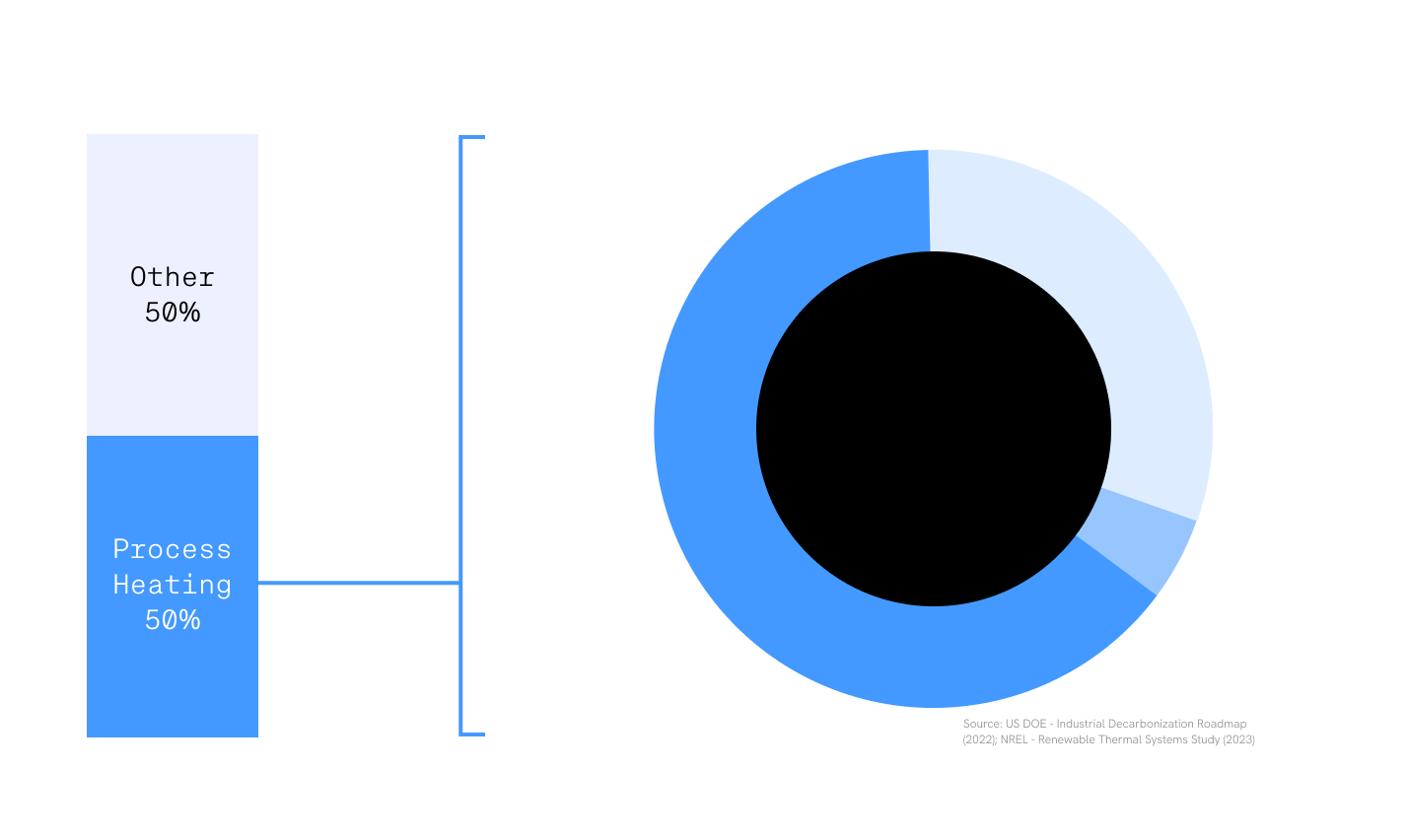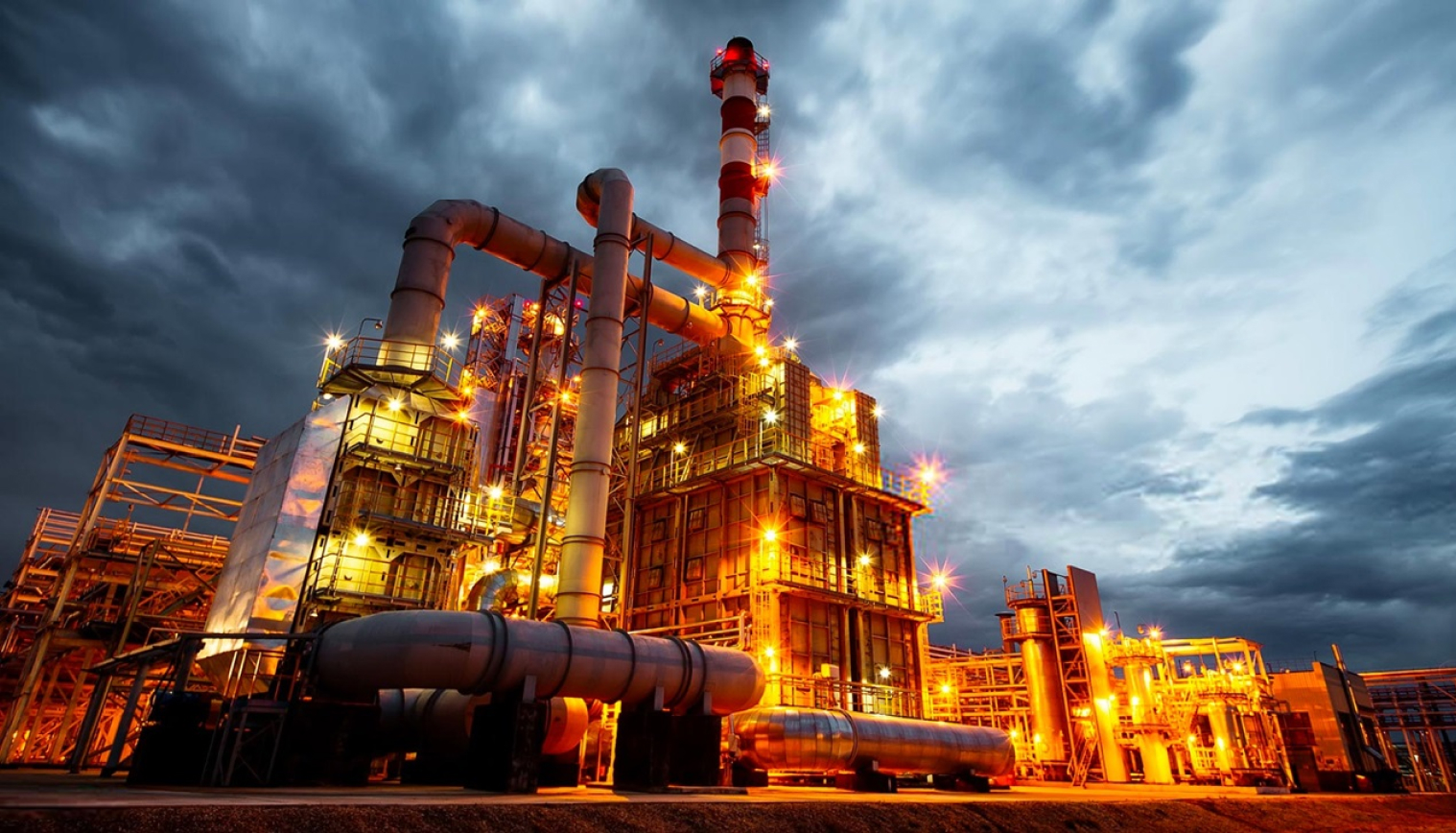
The road to the clean electrification of industrial heat is riddled with challenges for industry, utilities, innovators, and policymakers.

The majority of industrial heat is produced by fossil-fuel based sources (mostly natural gas).

To make the shift towards electrification, technologies must compete with the current state of business. The low price and wide availability of natural gas is a major hurdle for clean tech.

Prices of existing heat sources vary geographically. The economics associated with the production and delivery of natural gas and electricity differ across the United States.
Average Price of Natural Gas by State ($/mmbtu)
Similarly, the price of electricity varies locally due to changes in the price of fuel, power plant type, and regulatory environment.
Average Price of Industrial Electricity by Zip Code ($/mmbtu)

The competitiveness of a single unit of heat produced by electricity vs. natural gas varies by region. When compared, we can observe a limited number of areas in the US where switching to electrified heat makes economic sense today.
Average Difference Between the Cost of Heat Produced from Electricity vs. Natural gas ($/mmbtu)

Even when considering today’s carbon taxes, the picture remains relatively the same
Average Difference Between the Cost of Heat Produced from Electricity vs. Natural Gas Including the Current Cost of Carbon ($/mmbtu)
To provide further insight about this topic, we have developed an interactive tool that allows users to explore electrification scenarios by varying the cost of carbon, cost of carbon capture and storage (CCS), and availability of renewable electricity.



